Back to The Riders of the Plains.
The following is an excerpt from The Riders of the Plains: A Reminiscence of the Early and Exciting Days in the North West (1905), by Cecil Edward Denny. This work is in the public domain.
Continued from Chapter XII – Severe Trip to Helena.
Chapter XIII
Journey to Red Deer
F TROOP STARTED FOR the Bow river in August, and arrived on the south bank of that river after a pleasant journey of five days. The feed was good and game plentiful. The horses were in good condition and the wagons lightly loaded. We found the river very high, the width being about 200 yards. We had no boats, so took two wagon boxes and covered them with tarpaulins, and with the two tied together made a boat with which we ferried everything over, including the wagons, in two days. The work was of the hardest kind, the men having to be in the water all day, but the weather was warm, and we did not mind it. Everything was taken over on the second day without accident, and we pitched our tents on the north side of the Bow, and waited for Colonel Macleod, who had remained behind at Fort Macleod. He caught us up the day after we had crossed. We ferried him and his wagon over in short order, and started for the Red Deer river, 100 miles further north, on Aug. 15. About forty miles north of the Bow we left the prairie country and struck the timber line, which extended from that point hundreds of miles north of Edmonton. The country is rocky, and the hills are covered with willow and cottonwood, pine only being found along the streams, of which there are many. The whole section of country the farther you go north abounds with lakes and swamps full of ducks and geese, on which we mostly lived. The travelling was of the heaviest kind, as we had no road, and had to pick our way between, and sometimes through, the lakes and swamps, often getting stuck in the mud and causing much delay in pulling out.
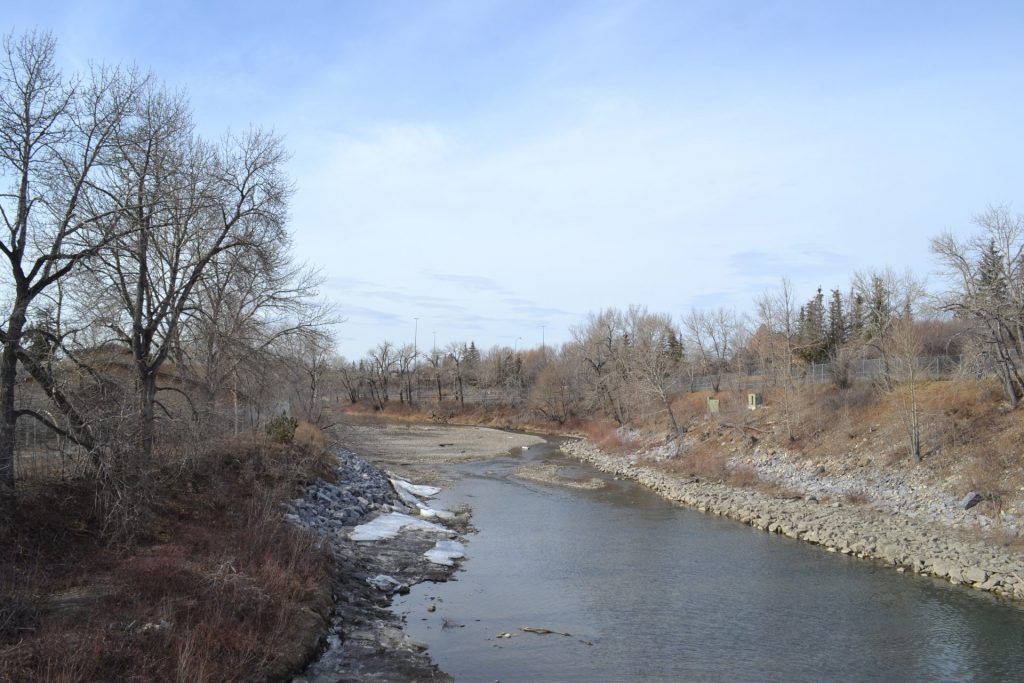
The mosquitoes were frightful, making the horses wild and almost ungovernable. We had to build great fires at night, and the horses would crowd around them for the protection of the smoke, and it required great care to prevent them standing in the fire and burning their hoofs. However, as we neared the Red Deer we found them less numerous than on the skirts of the wood.
We arrived at the Red Deer on the sixth day from the Bow river, and camped on the south side. There was a Cree half-breed’s house on the north side, and he having a boat, we made many visits to his camp, where we found a white trader from Edmonton married to a half-breed woman, daughter to the owner of the house. The Red Deer country to Edmonton was the Cree country. They did not go much south of the Red Deer as the Blackfeet were at war with them, and made it unpleasant for any party of Crees going on the plains.
The Crees physically are not such fine looking Indians as the Blackfeet or plain Indians, and had to work harder for their living, as, although there were plenty of buffalo sometimes in the timber country, at other times they were hard to find, migrating for a long time south on to the plains. The Crees there had to depend on fish, of which the large lakes were full, and small game such as deer, and often killing both elk and moose.
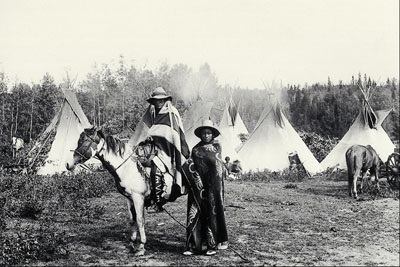
The Crees dressed more in the fashion of the half-breed, with whom they were intimately associated; the half-breed mostly intermarrying with them.
Their arms were inferior to those of the plain Indians, as they had little or no intercourse with the American traders, who supplied the Blackfeet with repeating rifles and fixed ammunition, while the Crees traded with the Hudson’s Bay Company, and were only armed with the old fashioned flint lock musket, and powder and ball. These guns were about as dangerous to the user as to the game at which they fired, and we came across many half-breeds with a finger blown off, or the hand mutilated, from the explosion of these guns.
The half-breeds were in the habit, while on the gallop after buffalo, of filling their mouths full of bullets, and as they rode at full gallop poured a charge of powder down the barrel of the gun, and spat a bullet in after it, holding the muzzle up till they came to shoot, which, when they did, often resulted in the bursting of the gun.
The Hudson’s Bay Company supplied these people in trade with blankets of a very superior quality, and a good class of woolen clothing, particularly the blue blanket coat with a hood, and the tobacco they sold was much prized by all the Indians in the country, it being expressly manufactured in England for the Indian trade and put up in carrots or rolls. Another kind of black tobacco, which was sold by the yard, was bought in large quantities, being more portable than cut or plug tobacco, and went further.
We remained at this camp for several days, and went through a daily course of mounted drill, which we were much in need of, for the inspection to come from General Smythe.
We found good fishing in the Red Deer, but no trout, the only fish being gold eyes and pike. The Red Deer is a slugging stream, with high wooded banks until you get about fifty miles east of the point at which we were encamped. From there the timber ceases altogether until you reach the mouth.
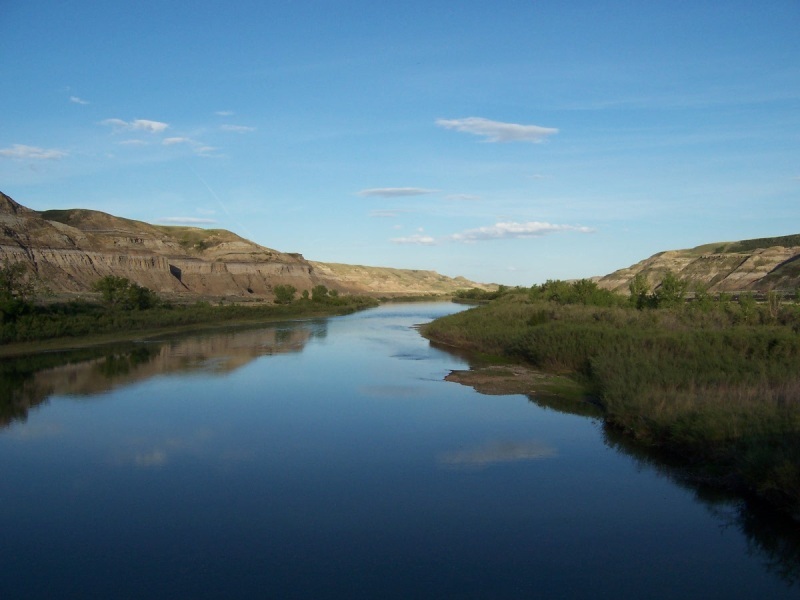
The trees along the banks are cut and torn, sometimes thirty feet up the trunks, by the ice that raises the river every spring, and generally causes it to flood the bottoms on both sides with many feet of water.
We received word while here that the general, with the police escort, was going to cross the river some forty miles above where we were encamped, so we struck camp and moved up the river to that point. It was a terrible road, nothing but mud holes and thick brush, and there were mosquitoes enough to eat us up alive; but after one or two stampedes we got to the upper crossing all right, and the day after we arrived the party came in from the north after a very hard march, about the same as we had coming from the lower camp. Their stock was in a bad way owing to the horses having contracted a hoof disease, caused from travelling in so much mud and water, the hoofs finally dropping off. We had to leave many of the horses behind.
While on the Red Deer river we came across every indication of coal, iron and oil. Large blocks of coal lay along the river bed, and no doubt that whole section is underlaid with coal seams. Not many miles north of the river, and not far from where we camped, there exists a burning coal seam; the ground is seamed with cracks and a sulphurous smoke exudes from the ground. It is not known how long this has been on fire. The Indians have no record of the commencement of it, and the old men say that in their forefathers’ time it was burning. It was no doubt started either by lightning or bush fires, as the coal lies very near the surface. Great coal and iron mines will some day be opened in this section when the timber is all cut and the population increases.
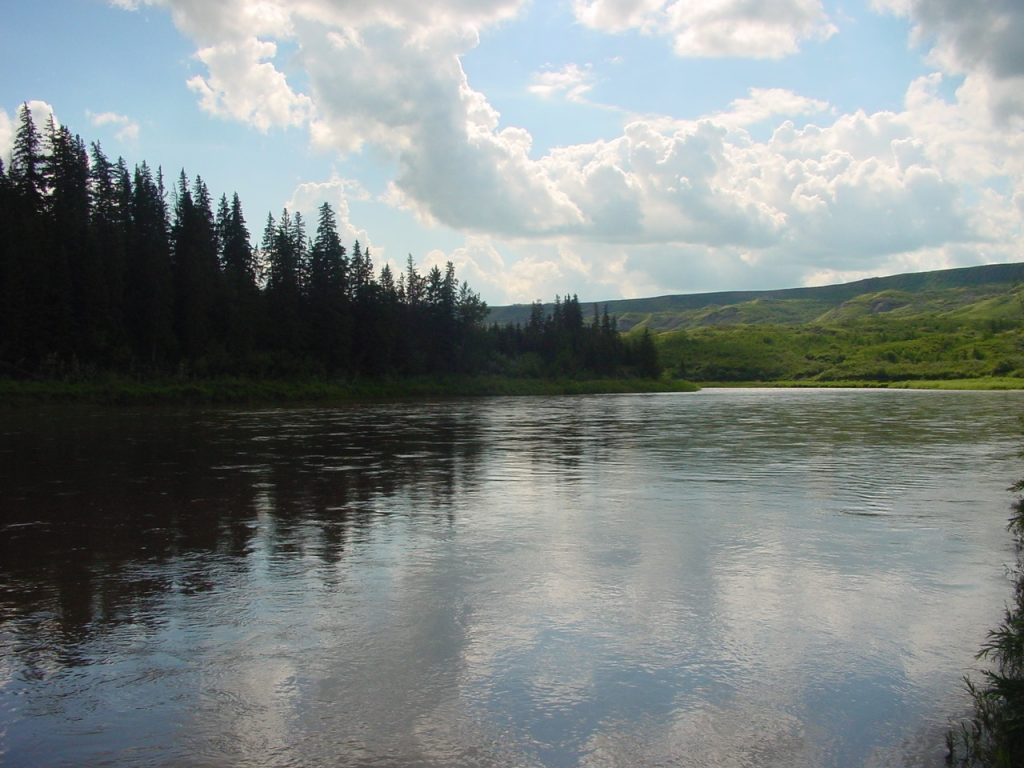
The mineral wealth of all the vast region north of the Red Deer river to the Mackenzie river must be prodigious, for coal, iron, oil, gold, silver and coper are known to exist in quantities, and precious stones, such as emeralds and rubies have been found on the shores of the Mackenzie river. The climate and cost of provisions and transport are the only drawbacks, but with a population these can easily be overcome, and a vast extent of the richest mineral country opened to the world.
The party of Col. Macleod and General Smythe crossed the Bow river at our old crossing and in the same manner, but not quite as successfully, meeting with several upsets and the narrow escape from drowning of a man or two. After inspecting Fort Macleod the general proceeded south via the Missouri September and from there back to Canada via the Missouri river.
We crossed the Bow in the wagon boxes without accident, and chose a site for a fort not far from the mouth of the Elbow as it was generally known the river was well wooded not [far] up from the point at which we had crossed that river in going north. It was intended to locate and build a fort on the south side of the Bow river, near the mouth of the Elbow, where Calgary now stands. Baker and company had already contracted to send men and bull teams up to that point to meet us, and to construct a stockade and picket fort, the timber to be got out at the nearest point available, it being from the mouth.
Our troop journeyed south to the Bow river by easy stages having lots of hunting on the road, and crossed the Bow a little above the mouth of the Elbow river, which at the mouth runs between two beautiful wooded river bottoms, each several miles long and wide, gradually sloping upwards to the open prairie.
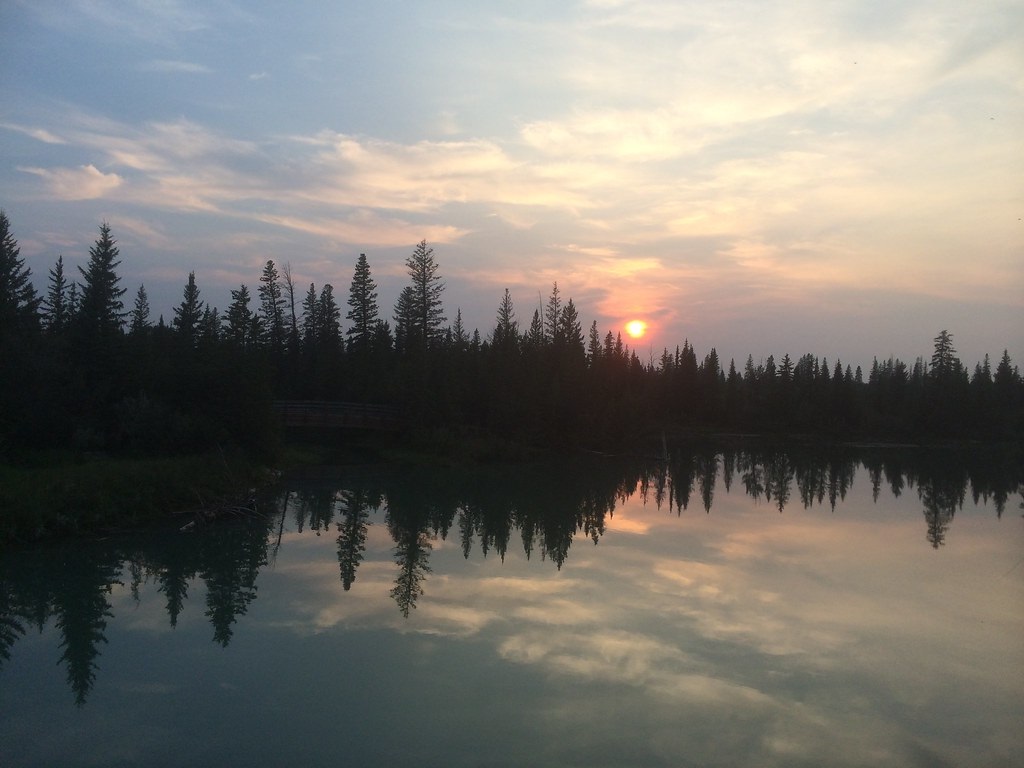
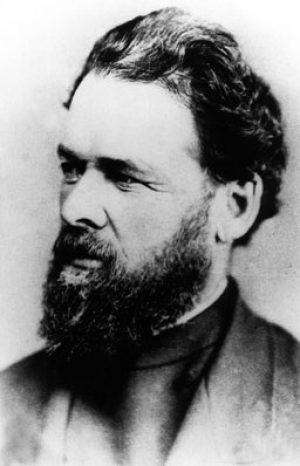
We went through an inspection parade here, which was considered satisfactory, and the party divided, General Smythe and escort, with Colonel Macleod, following our old trail back to Fort Macleod and F troop, with Captain Brisbois and myself, taking another road farther west, and proceeding to a point on the Bow river forty miles above the Elbow, on the west side, on a point of rising ground, a most beautiful spot with a grand view of the mountains some fifty miles to the west, and at this time covered with snow. There was no one living there within miles of the spot, the only habitation being a small Hudson’s Bay company’s trading post on Ghost river some twenty-five miles up the Bow and a small Methodist mission some six miles above the Hudson’s Bay post, for the Stoney Indians, with Rev. George McDougall in charge. His son kept also a trading post at the Mission, making a good thing out of those Indians in the fur trade. They did most of their hunting in the mountains and went far north in the winter after fine fur, which was very valuable and which was mostly purchased at this point.
The market for the fur was Winnipeg, and McDougall and other traders started out over the plains every year or so, with a long string of Red river carts with oxen and horses, loaded with robes and fine fur, and after several months tourney across the plains, returned in the fall with their loads of trading goods and provisions for the winter.
This half missionary and half trader was a paying business making those who engaged in it wealthy in a few years and able to retire young, as they have today.
We went to work near the site picked out for the fort to make ourselves comfortable, by digging trenches in the ground and covering them with brush and earth, with a fire place inside; some of these huts held six and eight men, and with plenty of wood we had no trouble to keep warm. The nights were getting pretty cold, it being September when we arrived at the Bow river.
Continued in Building the Village of Calgary.







Leave a Reply